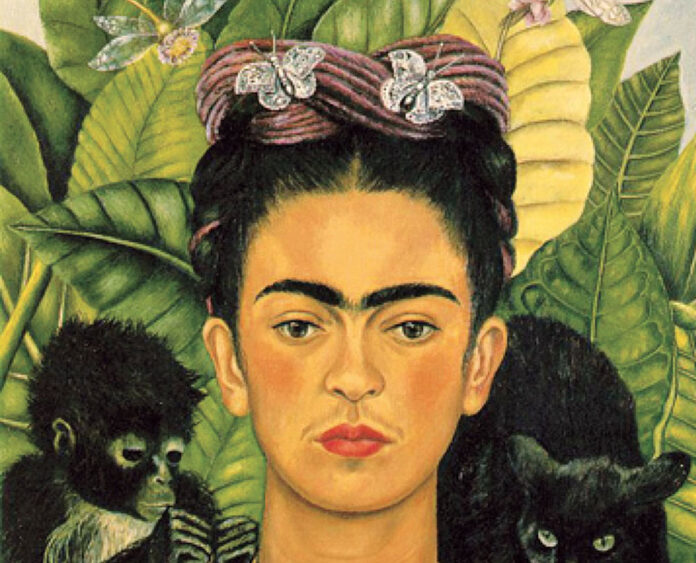by Zurellys Villegas
On July 13, 1954, the flame of one of the most emblematic and relevant artists in Mexico and the world went out: Frida Khalo. 70 years after her physical death, her cultural and artistic legacy continues to resonate strongly and inspire new generations as she is positioned as an icon of global culture.
Fiestas Fridas celebrated Frida Kahlo’s celestial passing on Saturday, July 13 with the documentary, “The Life and Death of Frida Kahlo,” at the La Plazita community building in Oakland, California.
Despite being an artist deeply rooted in her Mexican culture, Magdalena Carmen Frida Kahlo Calderón also left an indelible mark on American culture. In 1930, the Mexican artist arrived in San Francisco with her husband Diego Rivera, who had been commissioned to do some murals in the city.
In 1931, still in San Francisco, the outstanding artist feels inspired to paint one of her greatest works: The Portrait of Luther Burbank. This work depicts Burbank, the scientist and horticulturist renowned for growing unusual hybrids of fruits and vegetables, such as the duality of life and death, one of Khalo’s recurring themes.
Burbank dies in 1926 and is buried under a tree at his home in California, so many analysts and experts claim that the representation of the man rooted to a decomposing corpse underground comes directly from Khalo’s Mexican origin. In Mexican culture, some believe that when human beings die they move to plants and animals.
The Portrait of Luther Burbank, painted in 1931 in San Francisco, can now be seen in the Dolores Olmedo Museum in Mexico and represents themes of duality typical of the work of the Mexican cultural icon.
The great Mexican artist also visited New York, Philadelphia and Detroit. In one brief instance, Frida Kahlo and Diego Rivera visited Philadelphia to attend the premiere of the symphonic ballet “Horse Power,” a collaboration with Mexican composer Carlos Chávez, for which Rivera designed the sets and costumes.
In 1932, the author of ‘What Water Gave Me’ moved to the city of Detroit with Diego Rivera. There, the elephant and the dove, as her friends and acquaintances called them, remained until 1933.
For the first time, Frida exhibited individually in New York in 1938. The Julien Levy gallery in that city was the setting for her to sell several of her works and receive very good reviews in the media.
This exhibition served as a precedent for the artist to exhibit her works at the Pierre Colle gallery in Paris. In 1939, Frida crossed the Atlantic for the only time to expand her artistic horizon, reaching important galleries and museums that recorded her history in art.
Her only exhibition in Mexico would come a few years later. In 1953, the photographer Lola Álvarez Bravo organized the exhibition to which the painter attended the opening carried on a stretcher due to her delicate state of health.
Frida Khalo marries Diego Rivera for the second time in San Francisco
After several infidelities, Frida Khalo and Diego Rivera finally divorced, but their separation would only last a year because in 1940 they decided to marry again in the city of San Francisco, California. At the end of that year they remarried and then returned to Mexico until the illness “locked” the painter in her Blue House, located in Coyoacán, until just a few days after her 47th birthday.
Frida’s works came from Mexico and her artistic work revolutionized culture, not only through her painting, but also with her foray into politics at an early age, her sexual freedom, even the accident and illnesses that marked her life. and history.
Today, 70 years after her death, Frida Kahlo’s name is found everywhere. It is impossible not to include her art in the list of the most important and recognized painters of all time.
With reports from fridakahlo.org, kahlo.org



